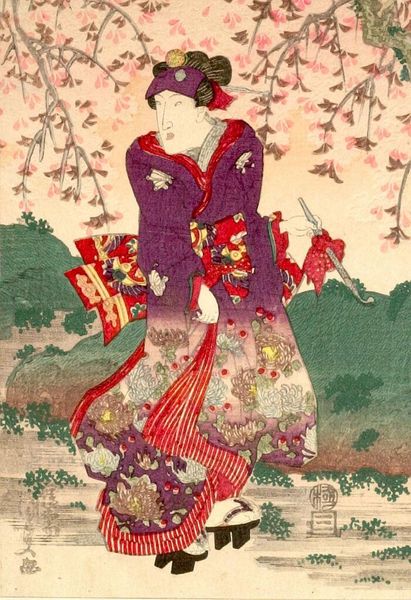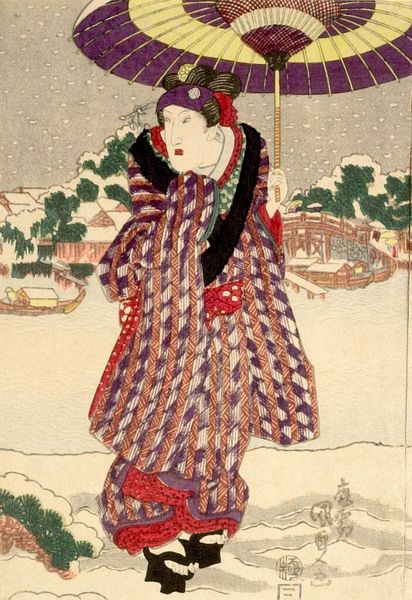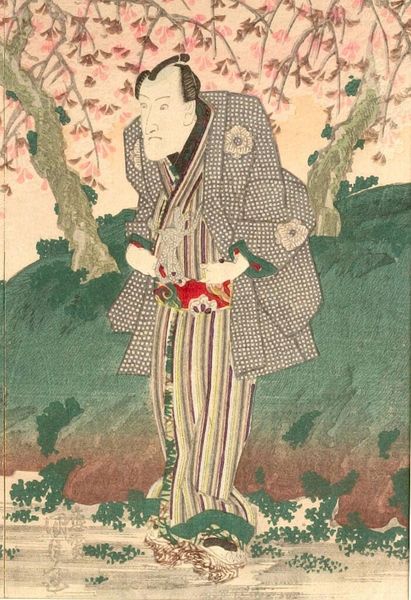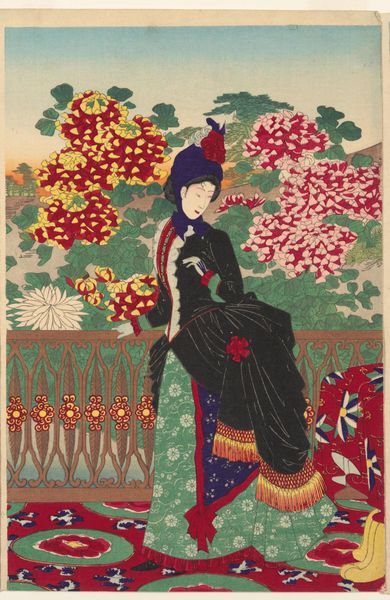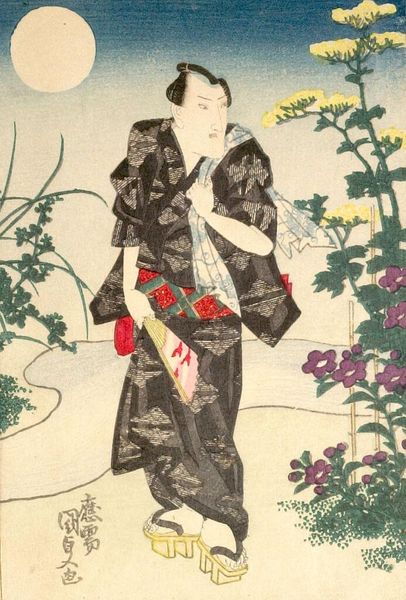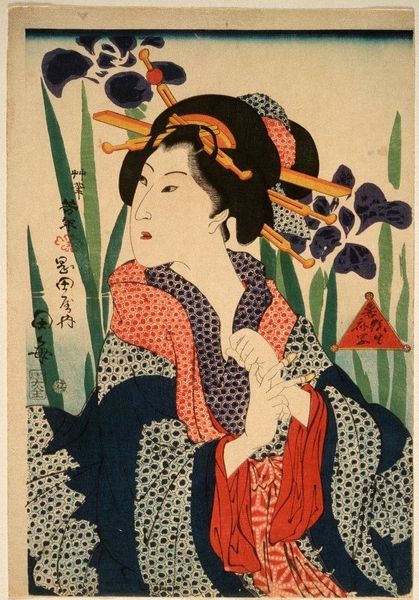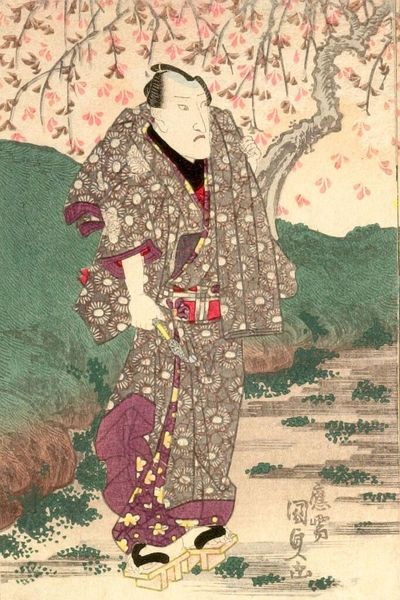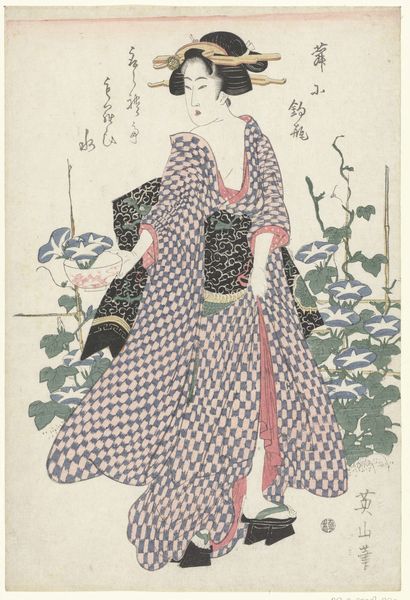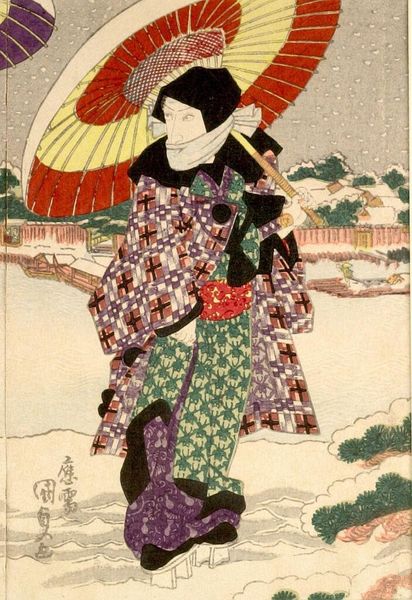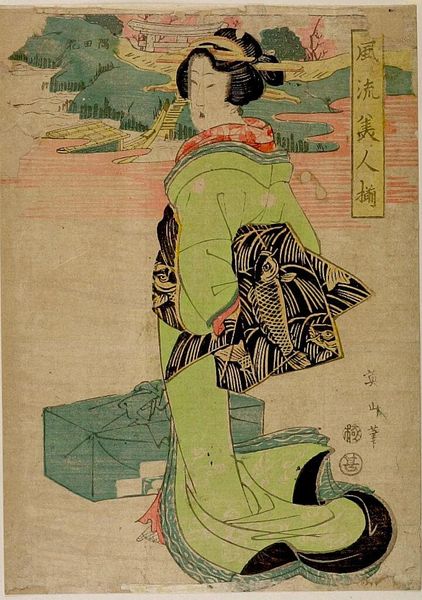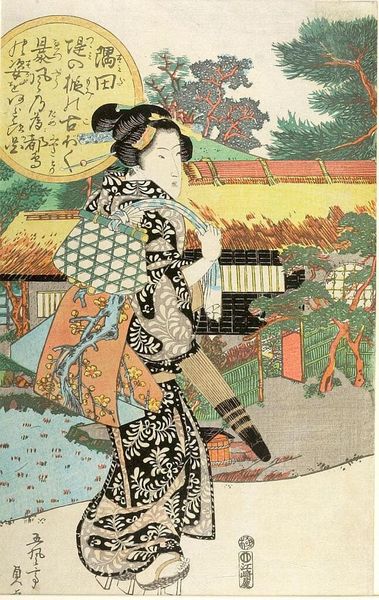
Actor Iwai Shijaku, from an untitled series of actors on the theme of Snow, Moon and Flowers (Setsugekka) c. 1825
0:00
0:00
Dimensions: Paper: H. 19.0 cm x W. 12.7 cm (7 1/2 x 5 in.)
Copyright: CC0 1.0
Curator: Here we see Utagawa Kunisada's woodblock print, "Actor Iwai Shijaku, from an untitled series of actors on the theme of Snow, Moon and Flowers (Setsugekka)," currently residing in the Harvard Art Museums. Editor: The first thing that strikes me is the precariousness of the figure—the high geta sandals against the implied snowy ground, the stark white face. There's an almost unsettling tension. Curator: Kunisada was a leading printmaker in 19th-century Edo, and prints like these played a key role in popularizing Kabuki actors. The "Snow, Moon, and Flowers" theme itself is a classical reference, often used to ennoble the depiction of everyday pleasures. Editor: Yes, but this isn't just about pleasure, is it? The exaggerated pose, the almost mask-like face—it feels like a commentary on performance itself, the constructed nature of identity, perhaps even the commodification of the performer. Curator: True, and we must remember that Kabuki was a highly regulated art form, subject to all sorts of social and political pressures. Kunisada, through his artistic choices, reveals the underlying tensions of the Edo period. Editor: I find this piece particularly compelling. It holds so much, about gender, about performance, about visibility, and how power intersects with cultural expression. Curator: It's a reminder that even seemingly simple portraits can offer profound insights into the social fabric of their time.
Comments
No comments
Be the first to comment and join the conversation on the ultimate creative platform.
